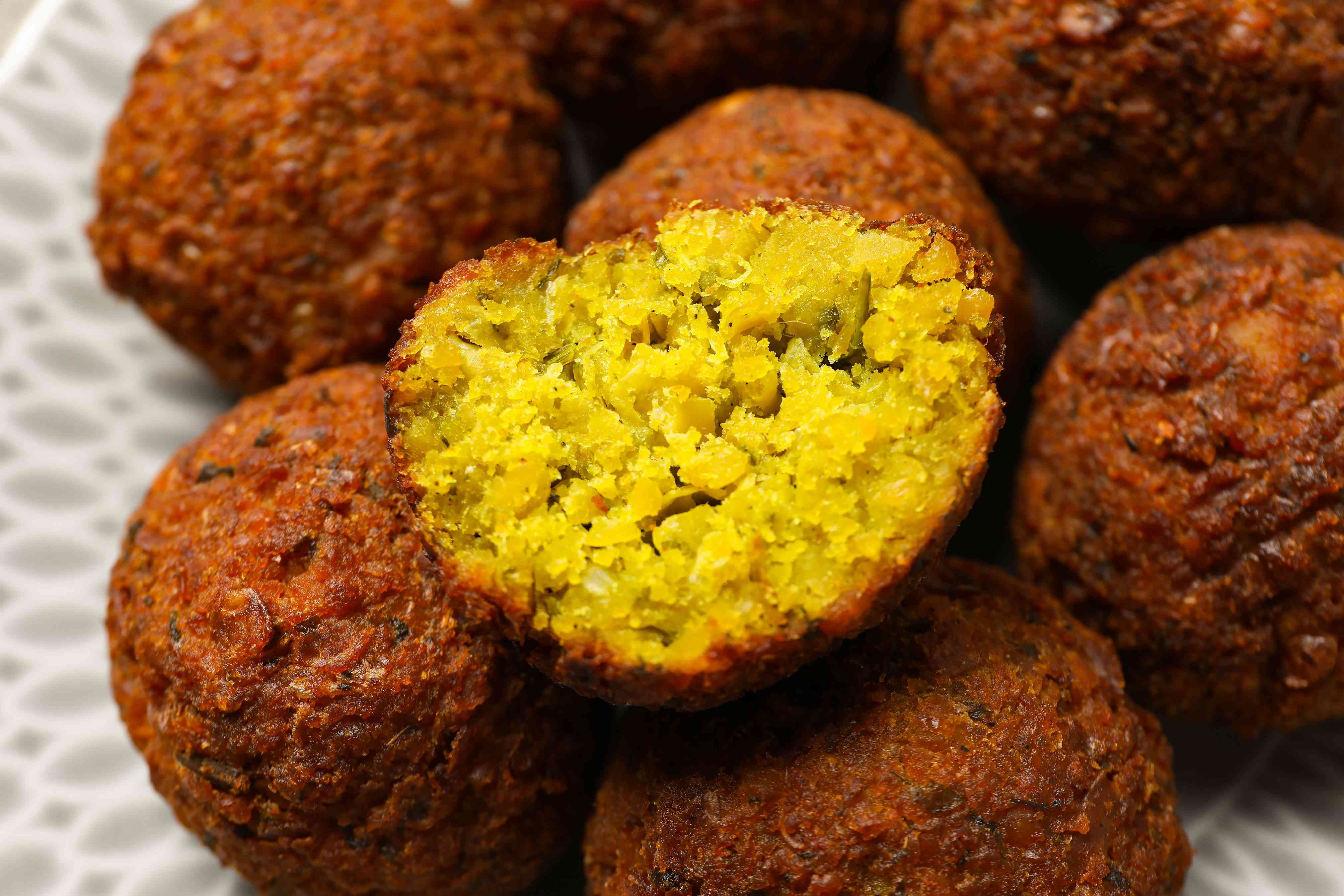
HOW TO MAKE CRISPY FALAFEL FOR SANDWICHES, SALADS, AND MORE
Deep-fried, baked, or even air-fried, this crisp-tender vegetarian street food tastes just as good at home.
If you’ve ever ordered falafel from a street cart or restaurant, you know just how irresistible these warm and savory fritters can be, whether tucked into a pita and drizzled with tahini or served alongside salad greens and rice. What you might not know is how easy this wholly vegetarian, chickpea-based dish is to make from scratch. Here’s a guide for turning chickpeas and spices into restaurant-worthy falafel.
Related: Spring Pea Falafel with Marinated Radishes and Minted Yogurt
What’s in falafel?
Falafel, a traditionally deep-fried dish, likely originated in Egypt, where it was first made with fava beans. However, it has since spread across the Mideast and today is most commonly made with a base of chickpeas.
“Cooks in the Levant and the majority of the Middle East use ground chickpeas. But in Egypt, where I grew up, and where falafel is said to have originated as a hearty vegan meal to sustain the Coptic community during long weeks of fasting, fava beans are the legume used in ta’amya [the Egyptian term for falafel],” says Suzy Karadesh, author of The Mediterranean Dish.
"“Canned chickpeas are a big no when it comes to falafel. They will fall apart while cooking. Dry chickpeas are naturally starchy, which is necessary for the falafel to hold its shape.”
"
— Suzy Karadesh
For falafel made with chickpeas, the dried variety is essential. “While canned chickpeas are a marvelous shortcut if you need them for a stew or salad, they are a big no when it comes to falafel,” says Karadesh. “If you use canned chickpeas to make falafel, they will fall apart while cooking. Dry chickpeas are naturally starchy, which is necessary for the falafel to hold its shape. Just be sure to budget time for soaking the dried chickpeas.”
In addition to a base of chickpeas or fava beans, falafel often includes onions, garlic, parsley, cilantro, salt, and spices such as cumin, coriander, and cayenne pepper. Some chefs or home cooks may add more fresh herbs like dill or mint, and a squeeze of fresh lemon.
How to make falafel
If you’re using dried chickpeas, you’ll need to first soak them in cold water for 24 hours. Once they are softened, drain the chickpeas and transfer them to a food processor. Add fresh herbs, spices, garlic cloves, lemon juice, and salt to taste, and pulse to combine until the mixture is smooth and creamy. Add in a little baking powder (about 1/2 teaspoon for two cups of chickpeas), which Karadesh says helps give falafel an airy, fluffy texture, and pulse again to incorporate.
Next, transfer the falafel mixture to a bowl, wrap it tightly, and store it in the refrigerator to chill, at least an hour or up to overnight; doing so will make it easier to form the falafel.
Traditionally, falafel is deep-fried — which arguably makes for the most delicious version — but you can also bake or air-fry them. Once you form the falafel into balls or patties that are roughly golf shape-sized, follow one of the following cooking methods.
- To fry: Pour oil to a depth of 1 1/2 inches in a heavy-bottomed pot or Dutch oven over medium-high heat until a deep-fry thermometer registers 375℉, or the oil is gently bubbling. Working in batches, fry falafel in the hot oil until they turn brown and crispy, about three to five minutes, then remove with a slotted spoon. Allow to drain on a paper towel-lined plate.
- To bake: Karadesh recommends baking falafel in a 350℉ oven for 20 minutes, flipping once.
- To air-fry: Set the air fryer to 400℉. Since air fryers can vary, Karadesh recommends frying falafel in five-minute increments until they’re crisp and golden-brown. Be sure not to overcrowd the air fryer.
Related: The 8 Best Air Fryers of 2024, According to Our Tests
How to freeze falafel
You can freeze prepared or fully cooked falafel for at least one month. Karadesh recommends preparing the falafel mixture and forming it into individual balls.
“I then arrange [the balls] on a sheet pan to freeze for a couple of hours,” she says. “Once they’ve hardened, I move the falafel to a freezer-safe container. That way, whenever we feel like having some, I’ll take out just what I need and fry them directly from frozen.” If freezing fully cooked falafel, be sure that they’re completely cool to the touch before packing and placing in the freezer.
For more Food & Wine news, make sure to sign up for our newsletter!
Read the original article on Food & Wine.
2024-07-04T10:06:00Z dg43tfdfdgfd